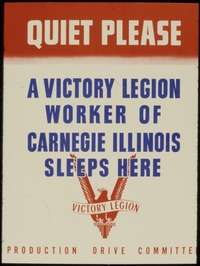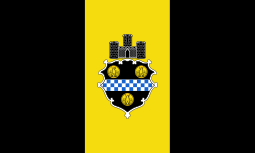Carnegie Steel Company
Carnegie Steel Company was a steel-producing company primarily created by Andrew Carnegie and several close associates, to manage businesses at steel mills in the Pittsburgh, Pennsylvania area in the late 19th century. The company formed in 1892 and was subsequently sold in 1901 in one of the largest ever business transactions of the early 20th century, to become the major component of the United States Steel Corporation. The subsequent sale made Carnegie one of the richest men in history.
 | |
| Partnership | |
| Industry | Steel, Coke, Railroad |
| Successor | U.S. Steel |
| Founded | July 1, 1892 |
| Founder | Andrew Carnegie |
| Defunct | March 2, 1901 |
| Headquarters | Pittsburgh, Pennsylvania |
Key people | Andrew Carnegie Henry Clay Frick Thomas M. Carnegie George Lauder Henry Phipps Jr. |
| Products | steel, coal, coke, flat-rolled and tubular steel products, railroad rails |
| Services | manufacturing |


Creation
Carnegie began the construction of his first steel mill, the Edgar Thomson Steel Works in 1872 at Braddock, Pennsylvania.[1] The Thomson Steel Works began producing rails in 1874.[2] By a combination of low wages, efficient technology infrastructure investment and an efficient organisation, the mill produced cheap steel, which sold for a large profit in the growing markets of industrial development. Carnegie alone estimated that 40% was returned on the investment i.e. a profit of $40,000 from a $100,000 investment in the mill.[3]
The profits made by the Edgar Thomson Steel Works were enough to let Carnegie and his partners, including Henry Clay Frick, his brother Thomas M. Carnegie, his cousin George Lauder, and Henry Phipps Jr., to buy other nearby steel mills. These included the Homestead Steel Works which Carnegie acquired in 1883.[4] The presence of the Allegheny, Monongahela, and Ohio rivers provided transport for the heavy materials associated with steel-making. Each plant was nearby or alongside a river.
Carnegie agreed to Frick's subsequent proposal that the various plants and assets be consolidated into one company. This consolidation occurred on July 1, 1892 with the formation of the Carnegie Steel Company.[5]
Operations
The company headquarters were in the Carnegie Building, an early skyscraper in Downtown Pittsburgh.[6] Built to show its use of steel in its construction, the building was fifteen stories high, and was left uncovered for a full year. The Carnegie Building was demolished in 1952. It was later rebuilt as a memorial in 2012.
Carnegie Steel made major technological innovations in the 1880s, especially the installation of the open hearth furnace system at Homestead in 1886. It now became possible to make steel suitable for structural beams and, with the advanced work of George Lauder in arms and armament, for armor plate for the US Navy and the militaries of other governments, which paid far higher prices for the premium product. In addition, the plant moved increasingly toward the continuous system of production. Carnegie installed vastly improved systems of material-handling, like overhead cranes, hoists, charging machines, and buggies. All of this greatly sped the process of steelmaking, and allowed the production of far vaster quantities of steel. As the mills expanded, the labor force grew rapidly, especially less skilled workers. The more skilled union members reacted with the unsuccessful 1892 Homestead Strike, along with demands for reduced working hours and against pay cuts. After the unsuccessful strike the company continued to expand and profits grew year on year, with the company having earned net profits of $21 million in 1899.[7]
J&L Steel was the most important competitor to the Carnegie Steel Company and later to U. S. Steel in the vicinity of Pittsburgh.
| Name | Location | Rail Service | Type of Facility |
|---|---|---|---|
| Carnegie Carrie Furnaces | Rankin | Union RR | Steel Mill - 5 Blast furnace stacks |
| Clark works | Pittsburgh | Allegheny Valley | Hoops, bands, light rails |
| Donora works | Donora | Pgh, Virginia & Charleston | Steel Mill - 2 Blast furnace stacks |
| Duquesne works | Cochran | Union RR | Steel Mill - 4 Blast furnace stacks |
| Edgar Thomson works | Bessemer | Union RR | Steel Mill - 11 Blast furnace stacks |
| Homestead works | Munhall | Union RR | Steel Mill |
| Howard axle works | Howard | Union RR | Forge |
| Isabella furnaces | Etna | West Penn | Steel Mill - 3 Blast furnace stacks |
| Lower Union Mills | Pittsburgh | Allegheny Valley | Iron Mill |
| Lucy furnaces | Pittsburgh | Allegheny Valley | Steel Mill - 2 Blast furnace stacks |
| Monessen works | Monessen | Pittsburgh and Lake Erie | Rolling Mill and Steel works |
| McCutcheon works | Allegheny | Pittsburgh and Western | Hoops, bands, light rails |
| Painter works | South Side | Pittsburgh and Lake Erie | Processing |
| Upper Union mills | Pittsburgh | Allegheny Valley | Iron Mill |
| Galvanizing plant | South Side | Pittsburgh and Lake Erie | Processing |
Sale
Carnegie Steel Company was sold in 1901 to the United States Steel Corporation; a newly formed organization, set up by J.P. Morgan.[9] It sold at roughly $492 million[10] ($14.8 billion in 2019), of which $226 million went to Carnegie himself.[11] U.S. Steel was a conglomerate with subsidiary companies. The name of the subsidiary company was changed to the Carnegie-Illinois Steel Company in 1936.
20th-century steel production
Changes in production processes to create steel had already appeared before the Carnegie Steel Company was sold. Steel manufacturers had begun to abandon the Bessemer converters and install open-hearth furnaces. Open-hearth furnaces were widely employed until the 1980s, when the basic oxygen steelmaking, electric arc furnace and continuous casting made them obsolete. The Edgar Thomson Steel Works in Braddock is still active, producing steel slabs that are shipped up river to the Irvin Works in West Mifflin to become finished coils.
References
- Nasaw, D., 2006, p.144
- Nasaw, D., 2006, p.161
- Nasaw, D., 2006, p.170
- "Rivers of Steel – Homestead Works". Archived from the original on March 9, 2016. Retrieved July 25, 2016.
- Nasaw, D., 2006, p.396
- "Mellon Square". Archived from the original on March 6, 2008. Retrieved January 22, 2008.
- Nasaw, D., 2006, p.578
- "Map of the Pittsburgh district showing railroad terminals and location of iron and steel works having track connections (circa 1906)".
- Nasaw, D., 2006, p.580-588
- "History of United States Steel Corporation – FundingUniverse". www.fundinguniverse.com. Retrieved May 14, 2019.
- Nasaw, D., 2006, p.687
Further reading
- Krass, Peter (2002). Carnegie. p. 612. A standard scholarly biography, along with Nasaw and Wall.
- Krause, Paul (1992). The Battle for Homestead, 1880–1892: Politics, Culture, and Steel. University of Pittsburgh Press. pp. 548.
- Nasaw, David (2006). Andrew Carnegie. Major biography along with Krass and Wall.
- Misa, Thomas J. (1995). A Nation of Steel: The Making of Modern America, 1865–1925. Archived from the original on August 5, 2012.
- Sabadasz, Joel (1992). "The Development of Modern Blast Furnace Practice: The Monongahela Valley Furnaces of the Carnegie Steel Company, 1872–1913". IA, The Journal of the Society for Industrial Archeology. 18 (1/2). JSTOR 40968252.
- Wall, Joseph (1970). Andrew Carnegie. Oxford University Press. p. 1137. A standard biography along with Nasaw and Krass.
External links
- Historic American Engineering Record (HAER) No. OH-33, "Carnegie Steel-Ohio Works, Steam Engines, 912 Salt Springs Road, Youngstown, Mahoning County, OH", 22 photos, 2 photo caption pages
